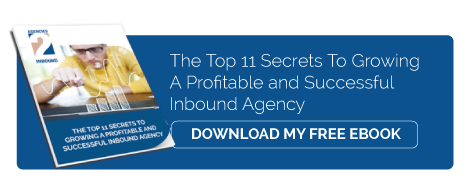 This might not sound like a revelation, but that’s probably because you’re not exactly sure what we mean. I know every decent agency talks about strategy and most of them actually deliver strategy work for their clients.
This might not sound like a revelation, but that’s probably because you’re not exactly sure what we mean. I know every decent agency talks about strategy and most of them actually deliver strategy work for their clients.
But strategy for an inbound marketing program is different than strategy for a social media campaign, website deliverable or any traditional ad campaign.
Today most of the firms who call themselves an inbound marketing agency are paying lip service to the idea of strategy. They create a handful of personas and off they go. The reason for this limited approach to strategy is twofold.
First, most of you are getting direction from outside sources that marketing strategy is equal to persona creation. That’s just not right. Next, you’re clients are telling you “speed is of the essence” and “you need to put points on the board early.” So you short cut any strategy conversations and hustle up the tactics. Also, a bad idea. Don’t do it.
Without a solid, comprehensive and detailed inbound marketing strategy it’s extremely difficult to manage the complexities associated with inbound marketing.
Let’s dig into that a little more. Agencies have been running integrated marketing campaigns for decades. Messaging is created and then distributed across a variety of marketing vehicles like TV, radio, print, outdoor all based on a solid marketing strategy and plan. However, each of these tactics are basically stand alone. What I mean buy this is that the outdoor does what it does regardless of the other advertising. The same with the other tactics, they don’t rely on each other for success.
Inbound Requires Strategy To Perform
Inbound is completely different. All the inbound tactics require a common thread that runs through all the tactics. The website, content marketing, email marketing, social media, search and video marketing all need to work together seamlessly if you want to see website traffic climb and lead generation grow.
At the foundation of any solid inbound plan is content and content is used in so many places. On the web, part of a blog, for social media, in emails, with lead nurturing, to get ranked on the search engines and as part of any effort to educate your client’s prospects.
Strategy has to include a lot more than just persona creation. It needs to include the messaging you’re going to use in all those complex inbound marketing tactics. It needs to include the differentiation for your client’s business and it needs to include a schematic to help you and your client understand the details that go into getting an inbound program to produce results.
Don't Skip The Tough Messaging Work
The messaging and differentiation is critical. Most agencies are good at coming up with the messaging but the differentiation is much tougher effort. Obviously the more remarkable you can make your client the better their marketing is going to resonate with their target prospects. It takes hard work, methodology and commitment to create a process to develop reliable differentiation for a business. It takes even more commitment to shepherd and guide your client through the process so they agree to operationalize your recommendations and truly end up with a remarkable and differentiated business for you to market.
Plans Keep Everyone On The Same Page
There’s another benefit of a strategic inbound plan that continues after the persona, messaging and differentiation is complete. Inbound requires a more hands on approach, there are many smaller tasks than with traditional tactics. Content creation, blogging, social media posts, website updates, search optimization, lead nurturing and email marketing take place monthly, weekly and in some cases daily, so knowing what you’re doing, when you’re doing it and how to do it is the difference between success and potential failure.
As part of the strategy, make sure you create detailed calendars for content and the execution of these repetitive tactical tasks. Not only does it function as a playbook for your team and the people responsible for executing the program but it also gives your client visibility into everything you're doing as part of their inbound program. Once they sign off, you’re good to go. Now the work shifts from planning to implementation and then into optimization, but that’s for another article, another day.
Start Today Tip – The best advice you could give your client is to slow down or even stop tactics until the marketing strategy is complete. How do we know what to write in an email or on a landing page, if we don’t know how to talk to their personas? If we don’t know what to say to emotionally connect with them, to draw them into their business' story and to get them interested. Without the strategy, ithe tactics are a waste of money. You have to make them see the importance of doing it, of paying you for it and the importance of holding on tactics until its ready and approved. It needs to be a non-negotiable.
This is just one of 11 secrets that agency owners managing their businesses through a transition into inbound need to consider. The other 10 are included in the free eBook: The 11 Secrets To Growing A Profitable and Successful Inbound Agency. To download the eBook, click the button below.
Agencies 2 Inbound - Helping You Go ALL IN on Inbound Marketing!


